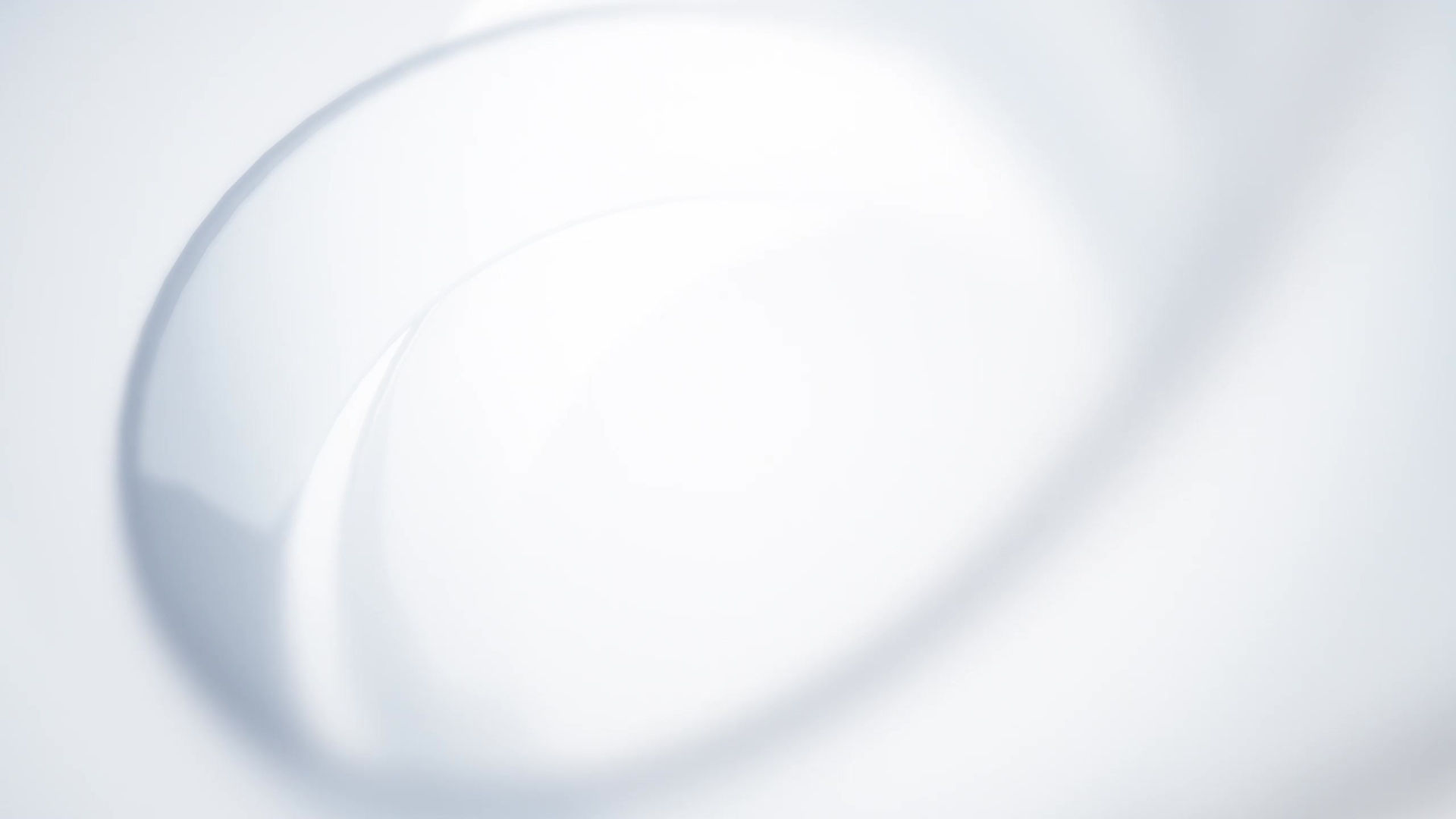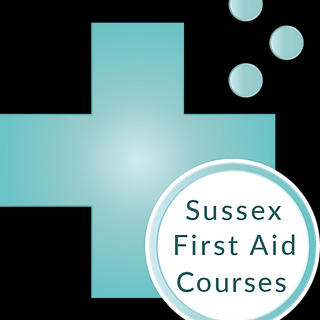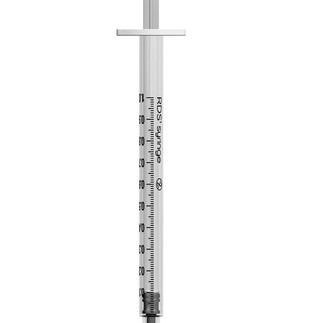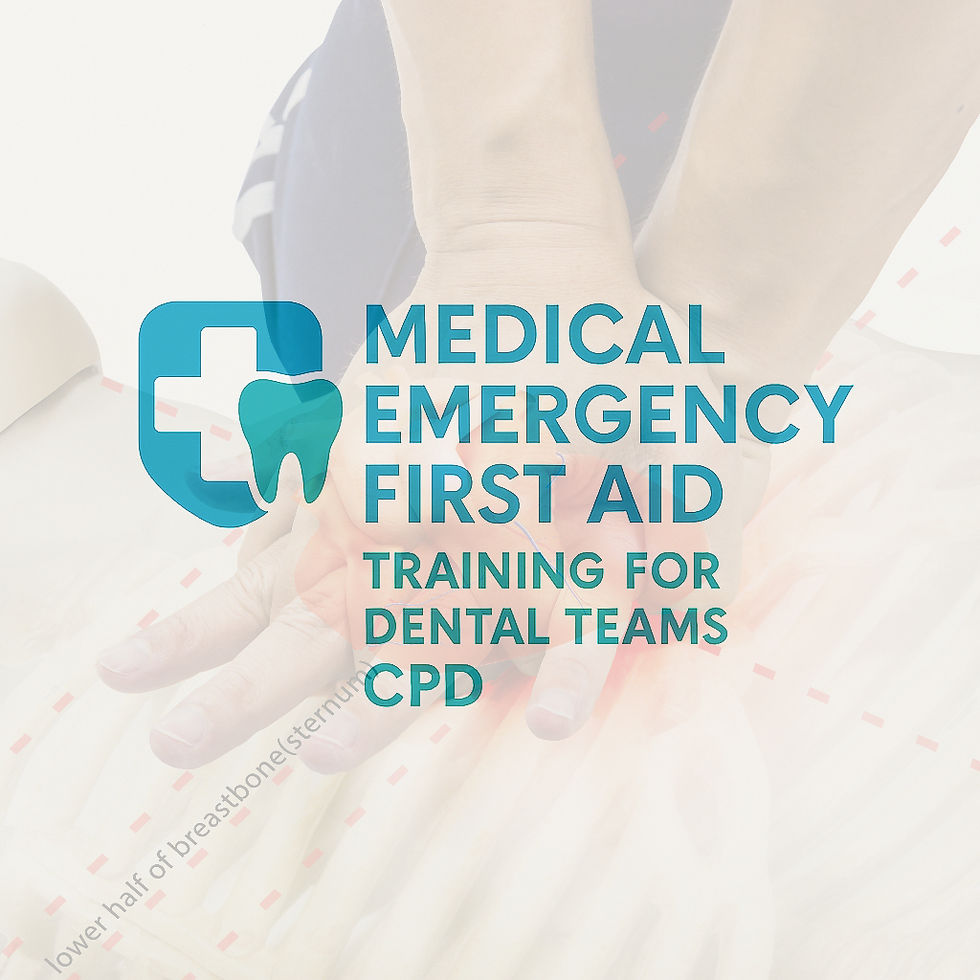Management of Anaphylaxis in the Dental Practice
- Admin
- Sep 1
- 5 min read
Anaphylaxis, Recognition and Treatment

Medical Emergency Guidelines for Dental Teams By Garry Perkins, HCPC Paramedic
The following guidance draws upon established protocols from the UK Resuscitation Council, NICE, BNF Dental Advisory Group, UK Ambulance JRCALC, GDC, and UK First Aid guidelines. These recommendations have been developed by Garry Perkins—an HCPC-registered paramedic with extensive experience teaching within dental practice settings and serving on the frontline—to offer dental teams a clear, practical, and effective framework for managing medical emergencies in the dental environment.
This is not intended to be a comprehensive clinical guideline covering all aspects of emergency care. Instead, it provides a realistic and workable approach tailored to the dental setting, where emergencies can be both challenging and unpredictable.
While the public may expect a high level of response during a medical emergency, it is important to recognise that dental professionals are not expected to operate beyond their scope of practice. At every stage of an emergency, dental team members should refer to current UK medical guidelines, seek appropriate advice, and—when necessary—call 999 or refer the patient for further care or investigation.
Definition
Anaphylaxis is an extremely dangerous and life-threatening condition caused by a massive over-reaction of the body’s immune system. This reaction can lead to respiratory compromise, circulatory collapse, or both.
Severe anaphylactic reactions may develop slowly or occur within seconds, depending on the allergen, route of exposure, and individual sensitivity. In general, the faster the onset, the more serious the reaction.
It has been recognised that as health care professionals we should lower our threshold in recognizing anaphylaxis.
All patients that have a anaphylaxis episode should be referred for further monitoring and investigation.
Challenge yourself at each stage of patient care and ask, could this be anaphylaxis. If in doubt then treat as anaphylaxis. Remember "All that wheezes is not Asthmatic"
Pathophysiology
Anaphylaxis requires prior sensitisation to a specific allergen. Upon repeat exposure, lymphocytes release vast amounts of histamine and other mediators, producing:
Dilation of blood vessels
Constriction of bronchioles in the lungs
Increased capillary permeability, causing fluid leak and tissue swelling
Thickening of blood due to fluid loss
Weakened cardiac contractility
Skin itching and red, blotchy appearance
Fluid shifting from the bloodstream into tissues leads to low blood pressure, sluggish circulation, airway swelling, and impaired oxygen exchange.
Causes and Common Allergens
Anaphylactic triggers vary but most often include:
Insect stings (bees, wasps)
Food allergens (nuts, shellfish)
Medications (penicillins, non-steroidal anti-inflammatories)
Latex
Others
Dental-specific risks
Natural rubber latex (NRL) in gloves and equipment
Injectable penicillins or cephalosporins
Non-steroidal anti-inflammatory drugs (e.g., ibuprofen)
Ester-based topical anaesthetics (e.g., benzocaine, tetracaine)
Signs and Symptoms
Anaphylaxis can progress within seconds. Early recognition is vital. Watch for:
Flushed Face (often first sign)
Sudden swelling of face, lips, tongue, neck, and eyes
Hoarse voice/ Stridor
Possible Low blood pressure
Wheezy or difficult breathing; tight chest
Rapid, weak pulse
Profound drop in blood pressure
Red, blotchy skin flushing
Abdominal pain, vomiting, diarrhoea
Itching, altered sensations, numbness/tingling of extremities
Feeling of impending doom
Loss of consciousness
Cardiac arrest
Top Tip: All or some of the signs/symptoms may be evident. IF in doubt treat as ANAPHYLAXIS.
Emergency Management
Call emergency 999 services immediately. State anaphylaxis emergency.
Call for your emergency team and for the emergency kit.
Administer intramuscular adrenaline (epinephrine) in the anterolateral aspect of the middle thigh. The needle needs to be long enough to ensure that the adrenaline is injected into muscle .with an IM injection:
Check the dose required for age group and check again (Adrenaline 1:1000)
Administer intramuscular adrenaline (epinephrine) in the anterolateral thigh or Upper arm as an IM injection.
Start the clock.
Repeat at five-minute intervals until there has been an adequate response/ marked improvement noted.
Provide high-flow oxygen 15 litres per minute to maximise oxygenation.
If wheezing consider Salbutamol 2 puffs
Position the casualty supine (laying down) with legs elevated to support blood pressure (allow them to sit up if breathing is severely compromised) However if the blood pressure is low they will need to be laying down. (Anaptyctic shock)
If unconscious with airway swelling, insert an oropharyngeal airway and recovery position. Monitor at all stages.
If no breathing or normal breathing start CPR and call for the AED. Stop administrating any medications and concentrate on resuscitation. Update the 999 services.
NOTE: Antihistamines are a secondary treatment and no longer advised in the initial primary treatment.
Antihistamines are second-line treatments (once stability begins at medical care centre or advance clinical care intervention in place.
Top Tip: Reduce any confusion in an emergency.
Remove any Antihistamines from Dental drug kits.
Remove any Corticosteroids from Dental drug kits.
Adrenaline Doses - Ampoules or Pre-filled syringes:
Intramuscular (IM) adrenaline used at 1mg/mL (1:1000) concentration
Adult and child >12 years: 500 micrograms IM (0.5 mL)
Child 6–12 years: 300 micrograms IM (0.3 mL)
Child 6 months to 6 years: 150 micrograms IM (0.15 mL)
Child <6 months: 100–150 micrograms IM (0.1–0.15 mL)
NOTE: The above doses are for IM injection only. Intravenous adrenaline for anaphylaxis to be given only by experienced specialists in an appropriate setting.
TOP TIP: Reduce the teams confusion or anxiety in a medical emergency.
Have your Rescue Ready draw up Kit with the adrenaline medication ampoules ready in a yellow medical pouch with drug dosages clearly displayed.
Ensure the draw up kit has:
Adrenaline 1:1000 ampoules x 2
Blue 23G 25 mm needles x 4 (Regular needle for administration)
Green 21G 38mm needles x 4, (Longer 21G 38 mm needle may be needed in some adults)
Graduated 1ml syringes x 4
Draw up Needles (Reduce needle stick injuries and filter any shattered glass)
Ampoule snappers

Auto-Injectors:
Patients at high risk often carry adrenaline auto-injectors that are generally in two set dosages.
300 mcg (0.3 ml of 1:1 000) IM
150 mcg (0.15 ml of 1:1 000) IM
Patients at high risk should:
Keep the auto-injector readily accessible.
Share a emergency care plan with the Dental Practice if one in place.
Self-administer at the first sign of a reaction.
Alert the dental team immediately after use (auto-injectors are single-use only)

NOTE: It is now recommended that all health care environments (Dental Practices,) do not store auto- Injectors.
Health Care professional should have ampoules of adrenaline 1,1000 concentration with a recue ready draw up kits ready for an emergency. Be fully trained and competent in the administration and procedure required.
Ensure your training provider covers IM administration in your core CPD training. See photo below for Rescue Ready draw up kit.
Chief Dental Officer for England requesting dental practices that stock AAIs in their medical emergencies drug kit to renew them with adrenaline ampoules, in order to preserve national stocks of the devices: ‘all healthcare professionals providing services where anaphylaxis treatment may be required should have the competency to draw up and administer adrenaline from ampoules with a normal syringe and needle.
Prevention and Preparedness
Take a thorough allergy history and record all known triggers.
Confirm that high-risk patients bring their auto-injector to appointments.
Ensure accurate dosing of adrenaline when drawing up dosages.
Avoid NRL-containing equipment—opt for latex-free alternatives.
Be cautious when prescribing new medications; consider referral to an allergist for unclear histories.
Ensure an emergency care plan is in place for the patient.
Educate staff with regular, scenario-based anaphylaxis drills.
Have your Medical Emergencies in the Dental Practice manual with your kit for treatment and drug dosages reference.
Further Resources
For detailed guidance, refer to the Resuscitation Council (UK) anaphylaxis FAQs and guidelines:www.resus.org.uk/pages/faqAna.htm
Beyond the Basics
Biphasic reactions: up to 20% experience a secondary wave of symptoms hours later—monitor for at least four hours post-reaction.
Psychological impact: survivors often report anxiety or fear around future exposures—consider follow-up support.
Simulation training: regular hands-on drills reinforce confidence and speed in recognising and managing anaphylaxis.
By integrating vigilance, prompt action, and hands-on preparedness, dental teams can confidently safeguard patients against this life-threatening emergency.























Comments